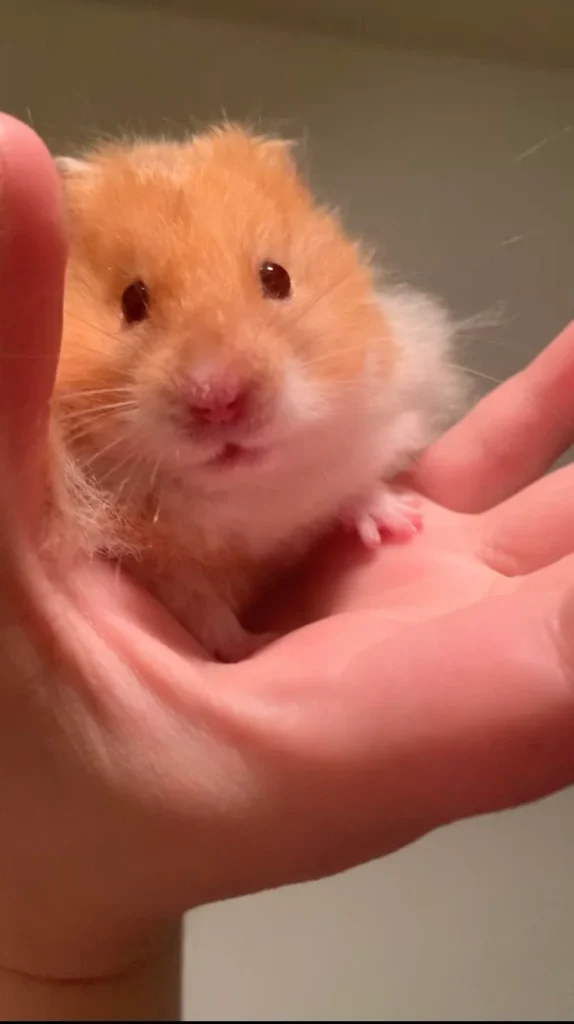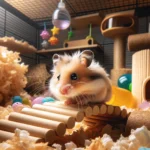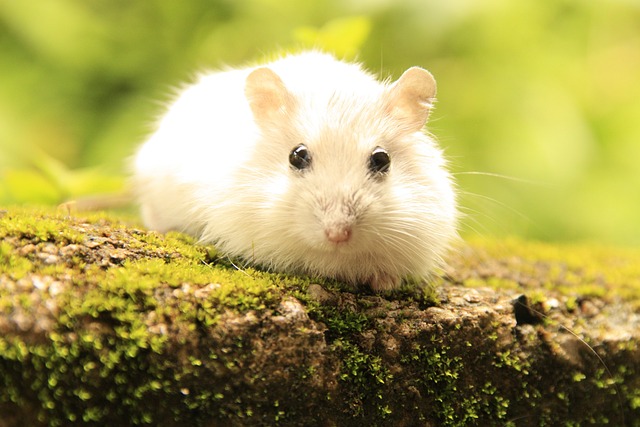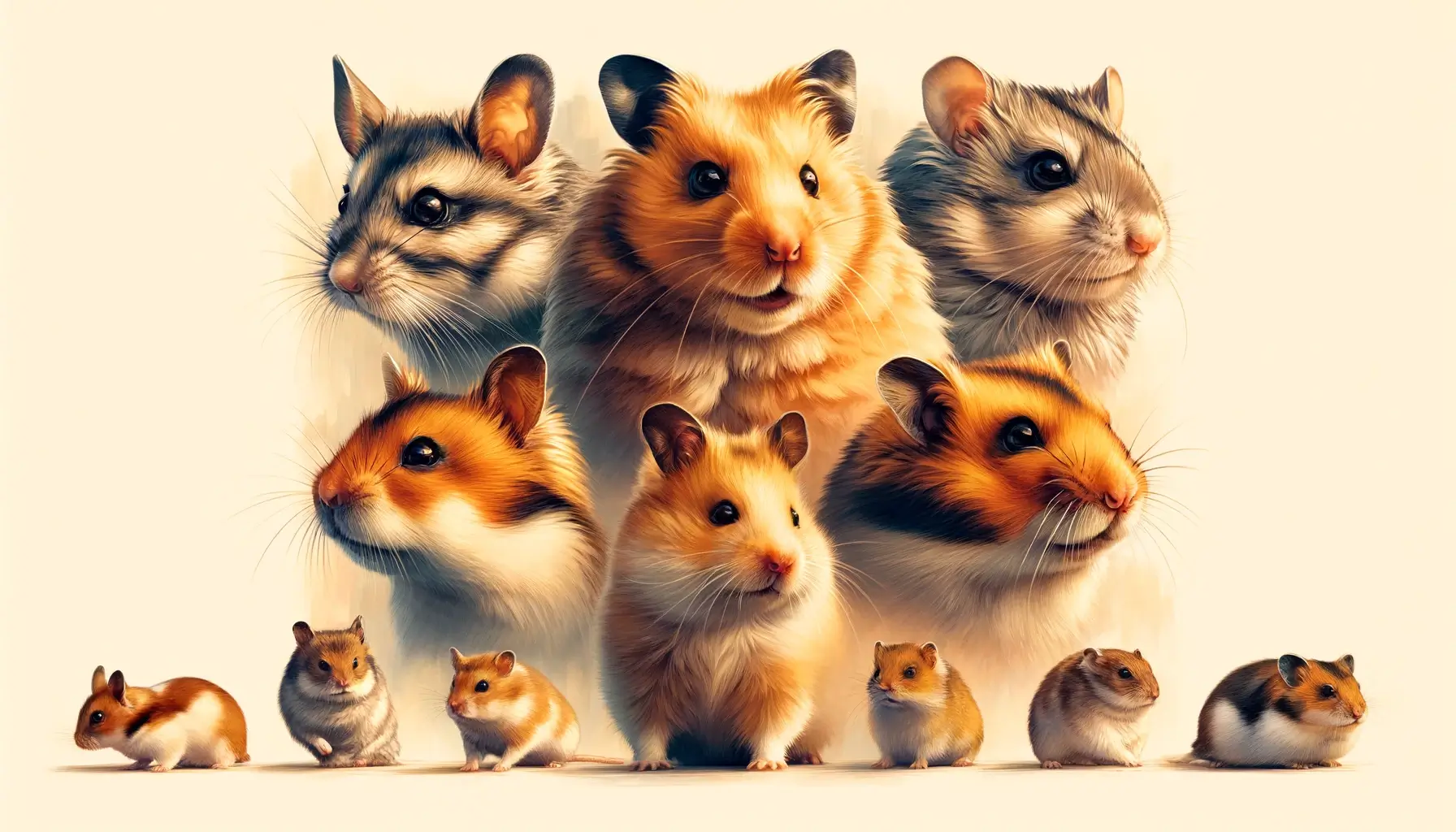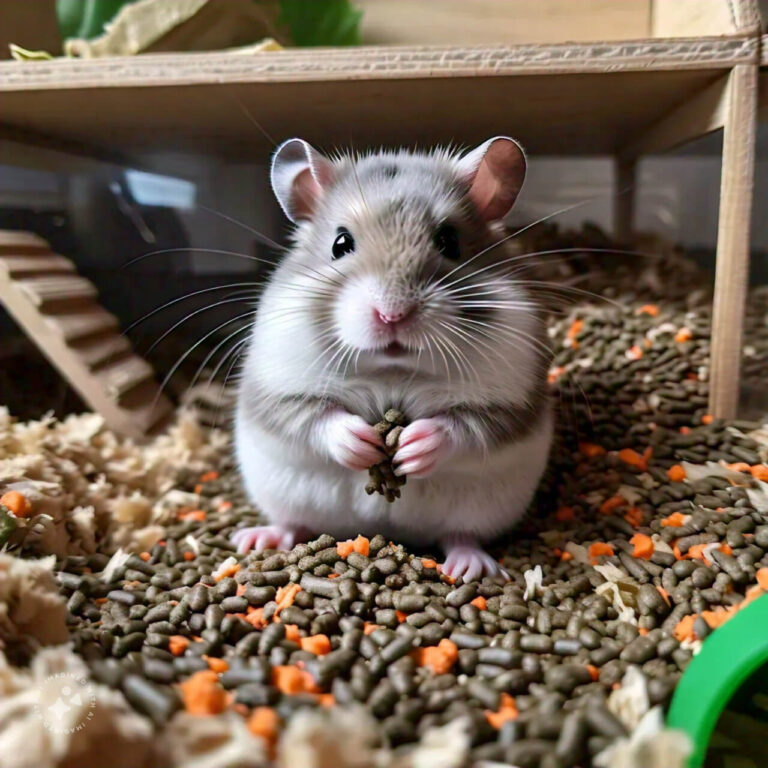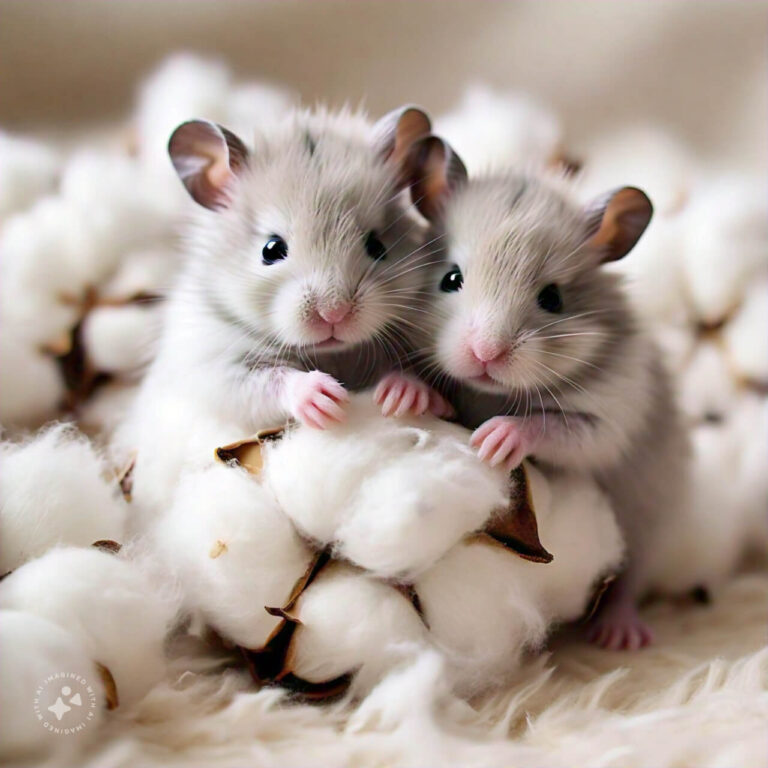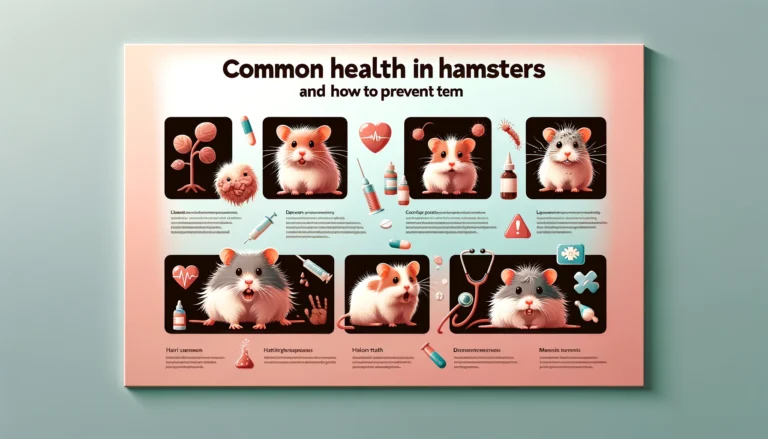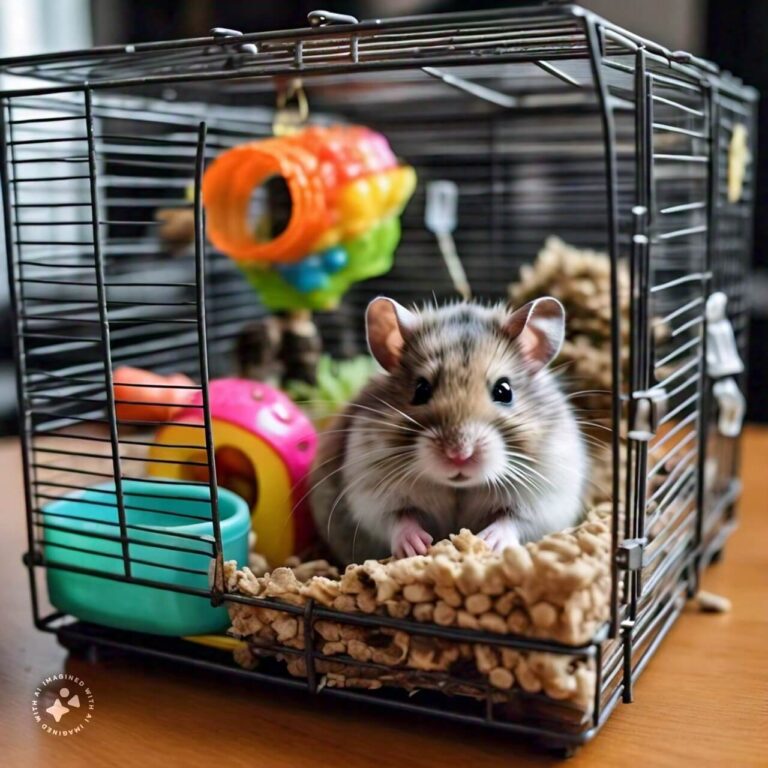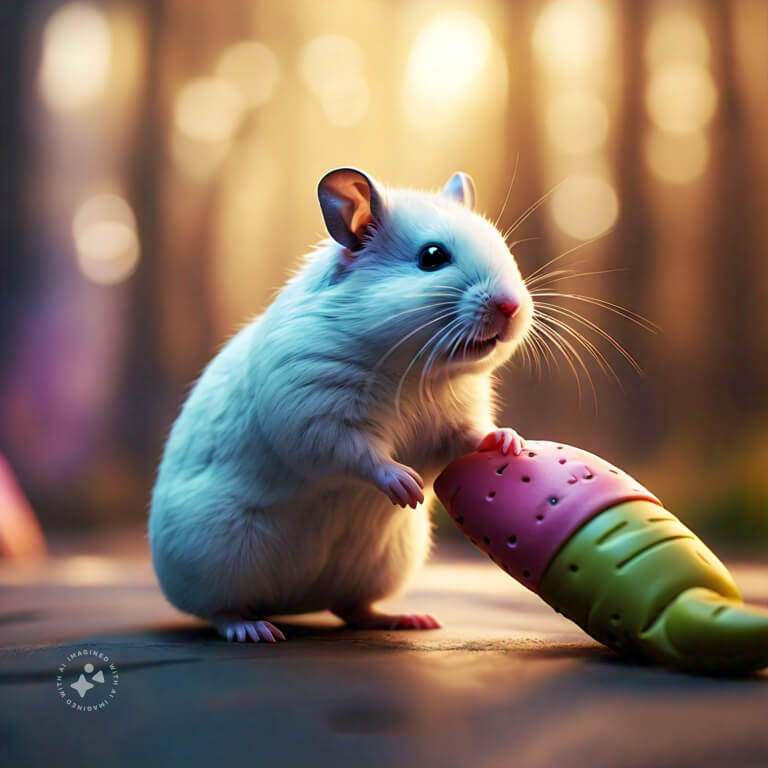What Do Hamsters Need To Be Happy – Hamsters.pk
A Spacious and Comfortable Habitat
When it comes to keeping your hamster happy and healthy, providing them with a spacious and comfortable habitat is essential. A properly sized cage or enclosure allows your furry friend to engage in natural behaviors, such as burrowing, exploring, and exercising. In this article, we’ll discuss the key elements of a suitable hamster habitat.
Cage Size
The minimum recommended cage size for a single hamster is 24 inches by 12 inches, with a height of at least 12 inches. However, larger is always better. Syrian hamsters, being the largest of the commonly kept pet hamsters, require even more space. A cage with a minimum floor space of 450 square inches is recommended for these larger hamsters.
Cage Type and Material
There are various types of hamster cages available, including wire cages, plastic cages, and glass tanks. Wire cages provide excellent ventilation and are easy to clean, but they must have a solid floor to prevent injury to your hamster’s delicate feet. Plastic cages and glass tanks can also be suitable, as long as they offer proper ventilation and are large enough.
Bedding and Nesting Material
Hamsters love to burrow and create cozy nests. Provide your hamster with a deep layer of bedding material, such as aspen wood shavings, paper-based bedding, or recycled paper. Avoid cedar and pine shavings, as these can be harmful to your hamster’s respiratory system. In addition to bedding, offer your hamster nesting material, such as shredded paper or tissue, to create a comfortable sleeping area.
Accessories and Enrichment
To keep your hamster mentally stimulated and physically active, include various accessories and enrichment items in their habitat. Some essential items include:
- Exercise wheel: Choose a solid-surface wheel to prevent foot injuries.
- Hideouts and tunnels: Provide your hamster with hiding spots and tunnels to explore, such as a small wooden house or a network of plastic tubes.
- Chew toys: Hamsters need to chew to keep their ever-growing teeth trimmed. Offer wooden chew toys or untreated branches from safe tree species.
- Food and water dishes: Provide a sturdy, shallow food dish and a water bottle with a metal spout.
Cleaning and Maintenance
Regularly clean your hamster’s habitat to maintain a healthy environment. Spot-clean the cage daily, removing soiled bedding and uneaten food. Perform a thorough cleaning once a week, replacing all the bedding and washing the cage and accessories with a mild, unscented soap.
By providing your hamster with a spacious, comfortable, and well-maintained habitat, you’ll ensure that your furry friend remains happy, healthy, and content.
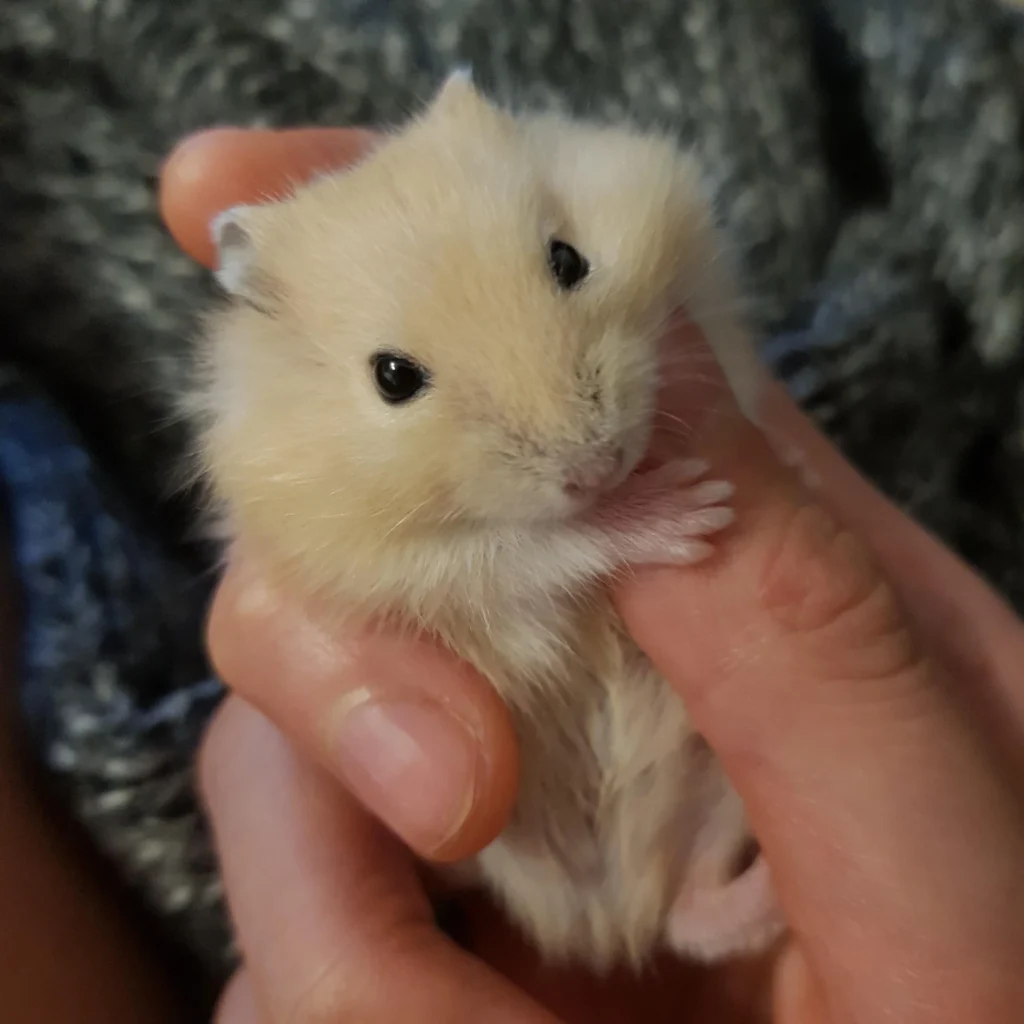
A Balanced and Nutritious Diet
Providing your hamster with a balanced and nutritious diet is crucial for their overall health and well-being. A proper diet will ensure that your furry friend receives all the necessary nutrients, vitamins, and minerals to maintain a healthy body and a happy life. In this article, we’ll explore the key components of a hamster’s diet and provide tips on how to keep your pet well-fed.
Commercial Hamster Food
The foundation of your hamster’s diet should be a high-quality, commercially prepared hamster food. Look for a formula that is specifically designed for hamsters and contains a balanced blend of proteins, carbohydrates, fats, vitamins, and minerals. Avoid mixes that contain a lot of sugary treats, as these can lead to obesity and other health issues.
Fresh Fruits and Vegetables
In addition to commercial food, offer your hamster a variety of fresh fruits and vegetables to provide additional nutrients and enrichment. Some hamster-safe options include:
- Vegetables: Carrots, cucumbers, zucchini, leafy greens, and bell peppers (in moderation)
- Fruits: Apples (seedless), blueberries, strawberries, and bananas (in moderation)
Introduce new foods gradually and in small amounts to avoid digestive upset. Remember to remove any uneaten fresh food daily to prevent spoilage.
Protein Sources
Hamsters require protein in their diet for proper growth and muscle maintenance. In addition to the protein provided in their commercial food, you can offer small amounts of cooked egg, mealworms, or crickets as occasional treats.
Treats and Snacks
While it’s tempting to spoil your hamster with treats, it’s essential to offer them in moderation. Overfeeding treats can lead to obesity and nutritional imbalances. Some healthy treat options include:
- Unsalted, raw nuts: Almonds, cashews, and walnuts
- Seeds: Pumpkin seeds and sunflower seeds (in moderation)
- Whole grain cereals: Rolled oats and unsweetened puffed rice
Fresh Water
Always provide your hamster with access to fresh, clean water. Use a water bottle with a metal spout to ensure a steady supply of water and to prevent contamination from bedding or droppings.
Feeding Schedule and Portion Control
Hamsters have small stomachs, so it’s best to feed them small portions several times a day. Offer a tablespoon of commercial food per day, along with a small amount of fresh produce and the occasional treat. Monitor your hamster’s weight and adjust their food intake as necessary to maintain a healthy body condition.
By providing your hamster with a balanced and nutritious diet, you’ll help them maintain a healthy weight, strong immune system, and a happy, active life.
Regular Exercise and Playtime
Hamsters are active and playful creatures that require regular exercise and playtime to stay healthy, both physically and mentally. Providing your furry friend with ample opportunities to exercise and engage in fun activities will help prevent obesity, boredom, and stress-related issues. In this article, we’ll discuss the importance of exercise and playtime for hamsters and provide ideas for keeping your pet active and entertained.
Exercise Wheels
One of the most essential items for a hamster’s exercise routine is an appropriately sized exercise wheel. Hamsters love to run, and a wheel allows them to do so in the limited space of their habitat. When choosing a wheel, consider the following:
- Size: Ensure the wheel is large enough for your hamster to run comfortably without arching their back.
- Surface: Choose a wheel with a solid surface to prevent foot injuries.
- Placement: Position the wheel away from the sleeping area to avoid disturbing your hamster’s rest.
Playful Accessories
In addition to an exercise wheel, provide your hamster with a variety of playful accessories to keep them active and entertained. Some popular options include:
- Tunnels and tubes: Hamsters love to explore and hide. Offer a network of plastic tubes or cardboard tunnels for your pet to navigate.
- Climbing toys: Provide your hamster with climbing opportunities, such as a small ladder, bridge, or a multi-level habitat.
- Chew toys: Hamsters need to chew to keep their ever-growing teeth in check. Offer wooden chew toys or untreated branches from safe tree species.
Out-of-Cage Playtime
To provide your hamster with even more exercise and exploration opportunities, consider offering supervised out-of-cage playtime. Create a safe, enclosed area where your hamster can roam, such as a playpen or a hamster-proofed room. Ensure that the area is free from hazards, such as electrical cords or small spaces where your hamster could get stuck.
Interactive Playtime
Engage in interactive playtime with your hamster to strengthen your bond and provide mental stimulation. Some fun activities include:
- Hiding treats: Scatter a few small treats around your hamster’s playtime area and let them forage for the goodies.
- Obstacle courses: Create a simple obstacle course using cardboard boxes, tubes, and other hamster-safe items.
- Gentle handling: Once your hamster is comfortable with being handled, spend some time each day gently petting and holding them.
Monitoring and Safety
While encouraging exercise and playtime, always prioritize your hamster’s safety and well-being. Supervise out-of-cage playtime to prevent escapes or accidents, and ensure that all toys and accessories are hamster-safe and free from sharp edges or small parts that could cause injury or choking.
By providing your hamster with regular exercise and playtime opportunities, you’ll help them maintain a healthy body weight, strong muscles, and a happy, stimulated mind.
Social Interaction and Companionship
While hamsters are often considered solitary animals, they can still benefit from social interaction and companionship, both with their human caregivers and, in some cases, with other hamsters. Providing your furry friend with appropriate social experiences can help prevent boredom, reduce stress, and enhance their overall well-being. In this article, we’ll explore the social needs of hamsters and provide tips on how to offer them the companionship they require.
Human-Hamster Bonding
One of the most important forms of social interaction for pet hamsters is bonding with their human caregivers. Spending quality time with your hamster can help build trust and create a stronger, more positive relationship. Some ways to bond with your hamster include:
- Gentle handling: Once your hamster is comfortable with your presence, gradually accustom them to being handled and held. Always handle your hamster gently and support their body fully to prevent falls or injuries.
- Hand-feeding treats: Offering your hamster small treats from your hand can help them associate you with positive experiences and encourage them to approach you more readily.
- Talking and singing: Hamsters can become familiar with your voice, so talk or sing to them softly during interactions to create a calming and reassuring atmosphere.
Same-Species Companionship
In the wild, some hamster species live in social groups, while others are more solitary. When it comes to pet hamsters, companionship requirements vary depending on the species:
- Syrian hamsters: Also known as golden hamsters, these are solitary by nature and should be housed alone. They can become territorial and aggressive towards other hamsters, even siblings.
- Dwarf hamsters: Some species, such as Campbell’s and winter white dwarf hamsters, can be housed in same-sex pairs or small groups if introduced at a young age. However, careful monitoring is essential, as conflicts can still arise.
If you choose to house dwarf hamsters together, ensure that their habitat is large enough to provide each hamster with their own space and resources, such as multiple hideouts, food dishes, and water bottles, to minimize competition and stress.
Signs of Stress or Aggression
When introducing hamsters or during playtime, watch for signs of stress or aggression, such as:
- Excessive squeaking or screaming
- Chasing or cornering
- Biting or fighting
- Fur loss or injuries
If you observe any of these behaviors, separate the hamsters immediately and house them individually to prevent further harm.
Encouraging Positive Interactions
To promote positive social experiences for your hamster, consider the following tips:
- Gradual introductions: When introducing your hamster to new people or animals, do so gradually and in a neutral environment to minimize stress.
- Respectful handling: Ensure that all family members and guests handle your hamster gently and respectfully, always prioritizing your pet’s comfort and safety.
- Quiet playtime: Engage with your hamster during quieter times of the day, such as early evening, when they are more likely to be awake and receptive to interaction.
By providing your hamster with appropriate social interaction and companionship, you can help them lead a happier, more fulfilling life as a cherished member of your family.
